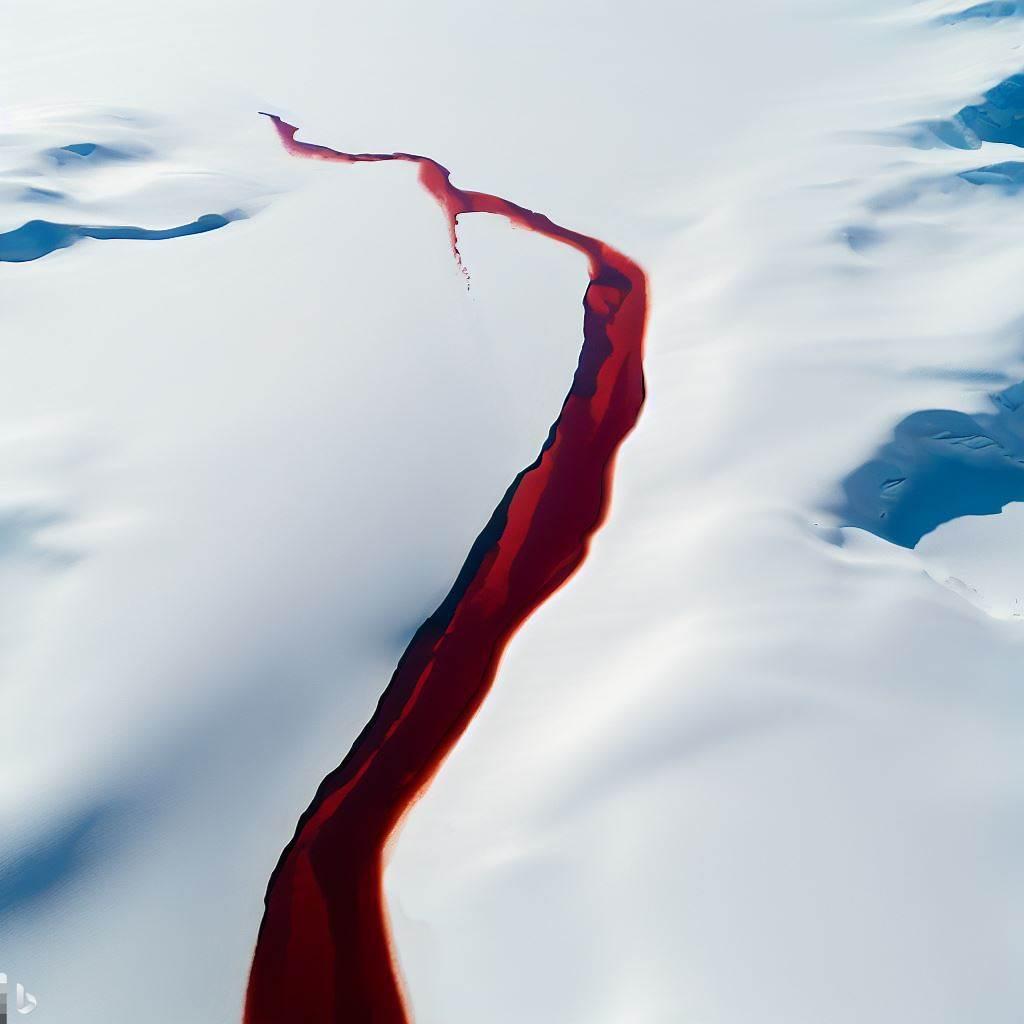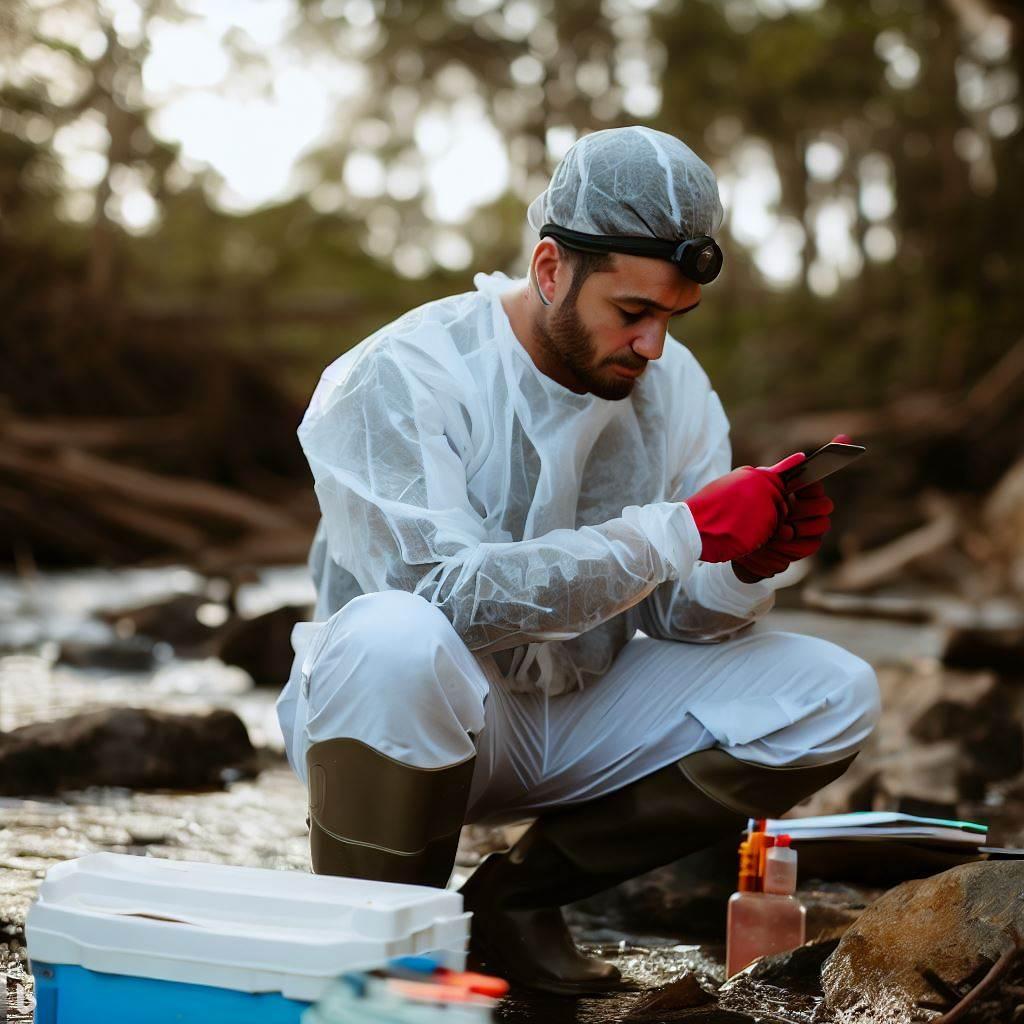Introduction:
Antarctica, the Earth's southernmost continent, has long captivated explorers and scientists with its pristine beauty and unforgiving landscapes. Among its many enigmatic features, one stands out: Blood River. This crimson flow, winding its way across the icy expanse, has puzzled researchers for decades. In this comprehensive article, we embark on a captivating and in-depth journey to uncover the secrets of Antarctica's Blood River, delving into its origins, composition, ecological significance, and the scientific endeavors undertaken to understand this remarkable phenomenon.
1: An Eerie Sight
1.1 The Discovery of Blood River
Antarctica's Blood River first caught the attention of explorers in the early 20th century, when it was stumbled upon during an expedition. The sight of a river flowing with crimson hues across the stark white landscape was both mesmerizing and unsettling.
1.2 Description and Geographic Location
Blood River, also known as the "River of Red Ice," stretches for several kilometers across the icy plains of Antarctica. Its serpentine path cuts through glaciers and frozen valleys, creating an otherworldly spectacle that defies explanation.
1.3 Visual Characteristics and Eerie Resemblance
The crimson coloration of Blood River is striking, resembling spilled blood against the pristine white backdrop. Its hue varies in intensity, from deep red to pinkish tones, depending on factors such as sunlight and weather conditions. This visual anomaly has fascinated researchers and sparked numerous theories about its origins.

2: Origins and Composition
2.1 Unraveling the Mystery: What Causes the Red Hue?
2.2 The Role of Microorganisms
Microorganisms, particularly algae and bacteria, have been found to thrive in the frigid waters of Blood River. These organisms produce pigments that contribute to the river's crimson hue through a process known as psychrophilic photosynthesis.
2.3 Investigating Geological Processes
Geological processes, including weathering, erosion, and the release of iron-rich sediments, play a significant role in shaping the composition of Blood River. Researchers have studied the geological formations and glacial activity in the region to gain insights into the mechanisms behind the river's unique characteristics.
2.4 Analyzing the Chemical Makeup
Scientists have conducted extensive chemical analyses of Blood River to identify the presence of various elements and compounds. These studies have revealed a complex composition, with high concentrations of iron, sulfur, and organic matter. Understanding the chemical makeup of the river contributes to our understanding of its formation and ecological significance.

3: Ecological Significance
3.1 Unique Ecosystems Along Blood River
Despite the extreme conditions, Blood River supports a surprisingly diverse ecosystem. Algae, bacteria, and other microorganisms thrive in its waters, creating a vibrant ecosystem that sustains a range of organisms, including invertebrates and even small fish.
3.2 Adaptations of Flora and Fauna
The flora and fauna inhabiting the vicinity of Blood River have developed unique adaptations to survive in this harsh environment. Mosses, lichens, and specialized microorganisms have evolved mechanisms to thrive in the nutrient-rich waters and extreme cold.
3.3 Interactions and Dependencies
The interconnectedness of organisms within the ecosystem of Blood River is crucial for their survival. Algae provide food and oxygen for other organisms, while invertebrates play important roles in nutrient cycling and maintaining ecological balance.
3.4 Potential Impacts of Climate Change
The impact of climate change on Blood River and its associated ecosystem is a growing concern. Rising temperatures, melting ice, and shifts in precipitation patterns could alter the river's flow, composition, and the delicate balance of its inhabitants.
4: Scientific Endeavors
4.1 Early Expeditions and Preliminary Studies
From the early explorations of the Antarctic continent to the establishment of research stations, scientists have been driven to unravel the mysteries of Blood River. Early expeditions collected samples and recorded observations, laying the foundation for future research.
4.2 Modern Research Techniques and Technologies
Advancements in technology have revolutionized our ability to study Blood River in unprecedented detail. Remote sensing, satellite imagery, and advanced analytical techniques allow scientists to map the river's flow patterns, study its chemical composition, and monitor changes over time.
4.3 Collaborative International Efforts
Understanding the complexities of Blood River requires collaborative efforts among international research institutions and organizations. Scientists from various countries come together to share data, conduct joint research projects, and pool resources to unravel the enigma of this crimson flow.
4.4 Recent Discoveries and Findings
Recent research has yielded significant discoveries, expanding our understanding of Blood River. Scientists have uncovered new species, identified unique microbial communities, and made strides in deciphering the underlying mechanisms behind its distinctive coloration.

5: Unanswered Questions and Future Exploration
5.1 The Quest for a Comprehensive Understanding
Despite significant progress, many questions about Blood River remain unanswered. Scientists continue to investigate the precise role of microorganisms, the geological processes shaping its course, and the potential connections between Blood River and other planetary bodies.
5.2 Challenges and Limitations of Antarctic Research
Conducting research in the extreme conditions of Antarctica presents numerous challenges, from logistical hurdles to limited accessibility. Overcoming these obstacles requires innovative approaches, cutting-edge technologies, and ongoing support for scientific exploration.
5.3 Exciting Prospects for Future Expeditions
Future expeditions hold immense promise for unraveling the remaining mysteries of Blood River. Advanced robotic exploration, deep drilling projects, and interdisciplinary collaborations could provide unprecedented insights into the river's origins and ecological importance.
5.4 The Importance of Continued Study and Conservation
Understanding and preserving Antarctica's Blood River is vital for multiple reasons. It contributes to our knowledge of Earth's ecosystems, provides insights into the potential for life on other planets, and serves as a powerful reminder of the fragility and interconnectedness of our planet's environments.

Conclusion:
Antarctica's Blood River remains a captivating enigma, beckoning researchers to unravel its secrets. Through this comprehensive exploration, we have gained insights into its unique origins and composition, its ecological significance, and the scientific endeavors dedicated to understanding this remarkable phenomenon. However, the enigma of Blood River is far from fully deciphered, and many questions remain unanswered. As our understanding deepens, we not only gain knowledge about this mysterious crimson flow but also develop a greater appreciation for the intricate complexities of our planet's ecosystems and the importance of their conservation.




Add a Comment: